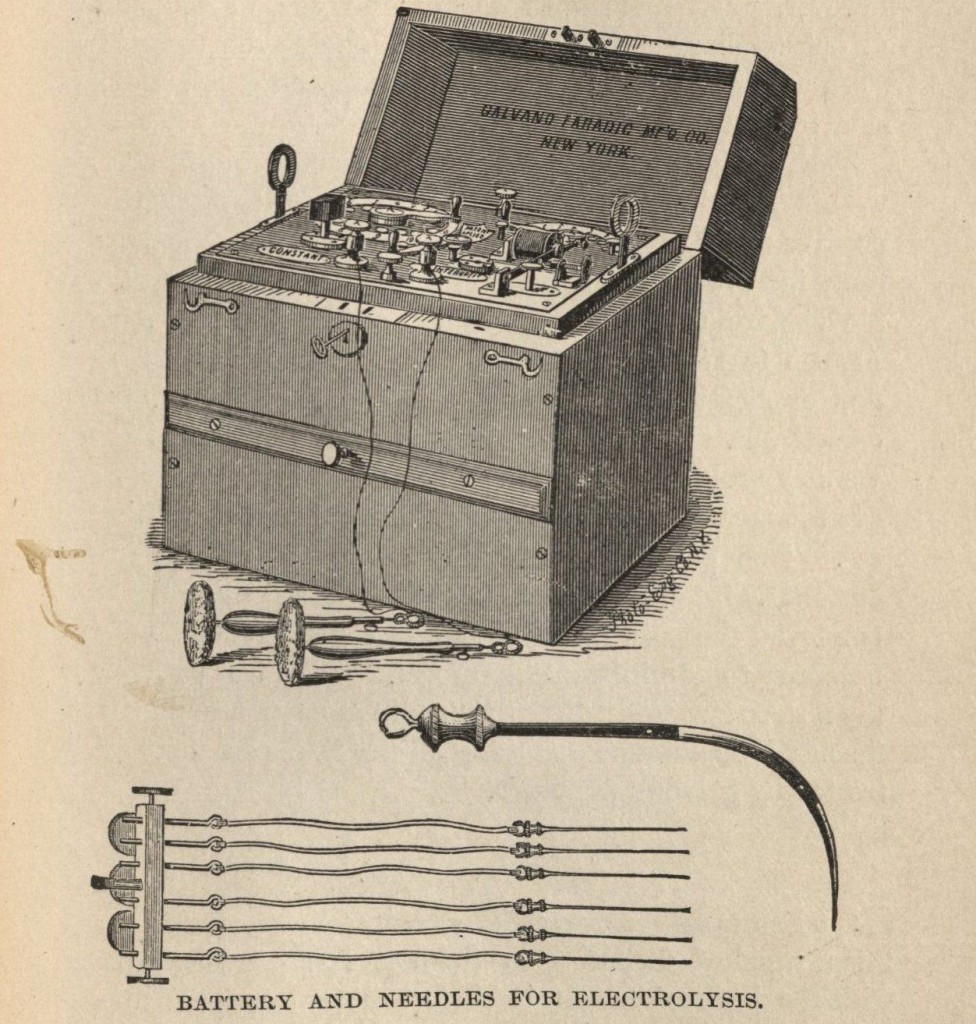This post is part of an ongoing series featuring items from the newly acquired Santo Domingo collection.
The use of electricity in medical treatment is hardly a new concept, Guillaume Duchenne was a French neurologist and developer of electrotherapy. Duchenne announced in 1855 that alternating current was more effective than a direct current for electrotherapeutic triggering of muscle contractions. One of the problems of direct current was the blistering of the skin due to the high voltage needed to stimulate the muscle, as well as the need to stop and restart the current with each contraction. What is fascinating about this particular 19th-century volume by John Ives are the conditions it claims electricity can cure.  Flatulence, bunions, and chilblains are all listed in the book as complaints that electricity can remediate. Hiccups and persistent yawning are also included as pesky problems which according to the text can be solved by putting the negative [electrical node] “under the ear and the positive by the seventh rib for five minutes, using a current from four to six cells.”
Flatulence, bunions, and chilblains are all listed in the book as complaints that electricity can remediate. Hiccups and persistent yawning are also included as pesky problems which according to the text can be solved by putting the negative [electrical node] “under the ear and the positive by the seventh rib for five minutes, using a current from four to six cells.”
Current use of electrotherapy is accepted in the field of rehabilitation and the American Physical Therapy Association acknowledges its use in tissue repair, pain management, joint mobility, treatment of neuromuscular dysfunction, as well as other areas.
Electricity as a medicine : and its mode of application / by John Ives. New York : Galvano-Faradic, 1887. RM870 .T91 1888 can be found at the Countway Library at the Harvard Medical School in Longwood.
Thanks to Alison Harris, Santo Domingo Project Manager and Joan Thomas, Rare Book Cataloger at Countway for contributing this post.


